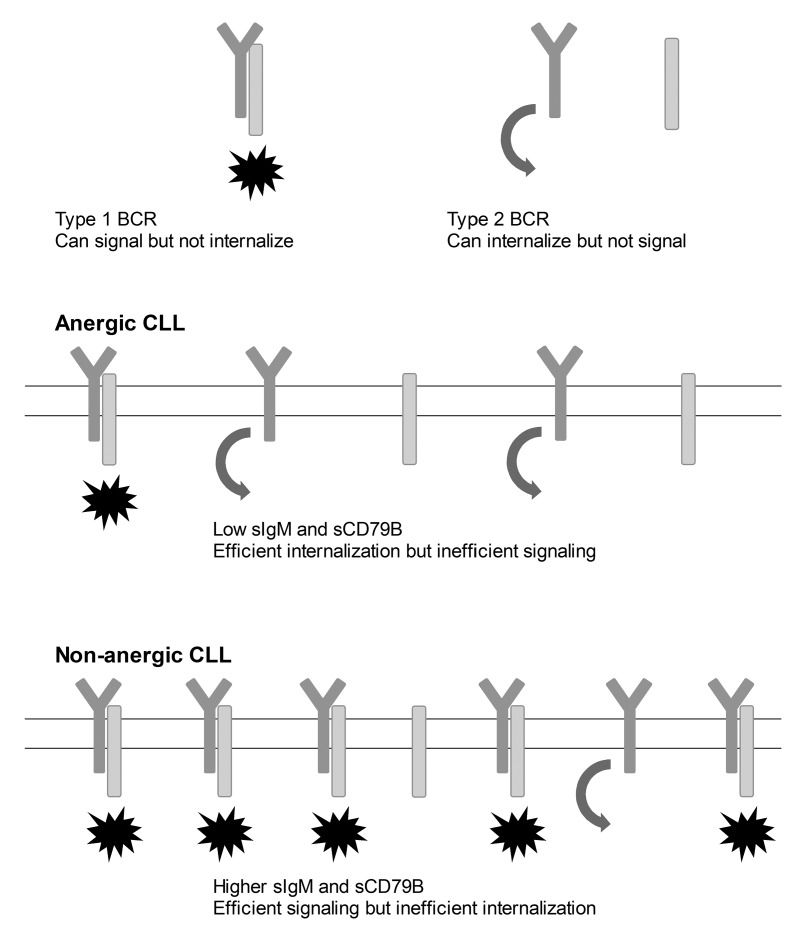Figure 4.
Proposed mechanism for the dissociation of BCR signaling and internalization in CLL. Two alternative configurations of the BCR are proposed. Type 1 in which CD79B and surface (s)IgM are already closely associated or become associated following ligand binding. This form of the receptor can transduce downstream signals, but is not internalized until the subunits dissociate. Type 2 BCRs do not contain CD79B either before or after ligand binding. These receptors therefore cannot signal but can become internalized. Possible BCR compositions in anergic and non-anergic CLL are illustrated. In anergic CLL, both sIgM and sCD79B levels are low and there is little potential for association between the two either before or after ligand binding. In this scenario, downstream BCR signaling is minimal but internalization is efficient. In non-anergic cases of CLL, both sIgM and sCD79B levels are higher and there is a greater likelihood of the two becoming associated. Signaling is thus relatively more efficient but the capacity for internalization is less. CLL: chronic lymphocytic leukemia; BCR: B-cell receptor.

